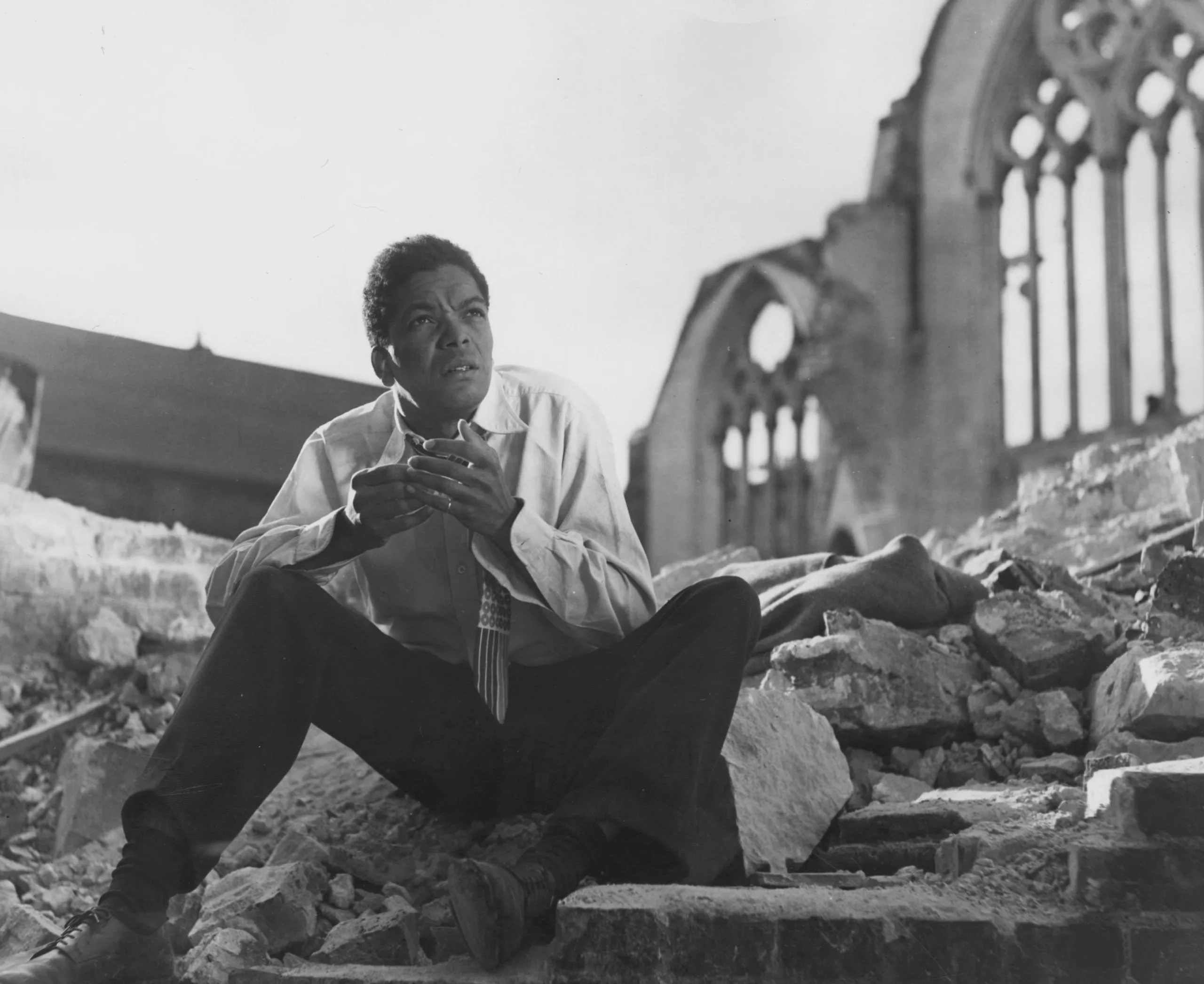When Jamaican Merchant seaman Johnny Lambert disembarks from his ship, the Dunbar, in London, he does so with two thoughts in mind: To have a good time with his fellow seaman, Dan Macdonald (Bonar Colleano), and to never see England again. He has visited this country enough to know the ire the color of his skin provokes. But what if this time, things are different? What if he does locate a soul who recognizes the content of his character? Such a possibility arises when Johnny meets the kind ticket taker Pat (Susan Shaw), a White woman who serves as his close companion during the pair’s many dates across Greenwich.
The racial boundary crossing in Basil Dearden’s “Pool of London” was unique for 1951. The interracial relationship, which was still taboo then, is further complicated by its occurrence in a country outside of America. That combination of setting and race, moreover, anticipates another film from a later era: Melvin Van Peebles’s “The Story of a Three-Day Pass.” Both frank, boundary-shifting films, when taken together, destabilize the false premise of racism as strictly an American problem.
“Pool of London,” of course, wasn’t the first movie to depict interracial relationships between Whites and Blacks. Earlier pictures often relied on racial passing to push the boundaries of what was acceptable. In Oscar Micheaux’s “The Symbol of the Unconquered” (1920), for example, a Black prospector fears he’s falling in love with a White woman only to discover she’s merely light-skinned. “Imitation of Life” (1934) sees Peola, a Black woman passing for White, fall for a White man named Stephen Archer. Elia Kazan’s “Pinky” (1949) concerns a White-passing Black nurse who falls for a doctor in the north. In these films, passing is a way to “safely” cross boundaries because ultimately the racial dynamics return to the status quo. The person passing eventually returns to their race, thereby either realizing the error of their ways, mourning their unrequited love, or enjoying a racially normative relationship.
Interracial relationships involving Black-presenting Americans first sparked controversy with “Island of the Sun” (1957) starring Harry Belafonte and Joan Fontaine and later became a common point of conversation in the post-apocalyptic thriller “The World, the Flesh and the Devil” (1959), the whirlwind romance at the heart of “A Patch of Blue” (1965), and “Guess Who’s Coming to Dinner” (1967), which was fascinatingly released the same year as “The Story of a Three-Day Pass.” These later films expanded on the acceptable dynamics of the passing films by either capturing moments of physical intimacy between races or showing how these relationships could be sustainable.
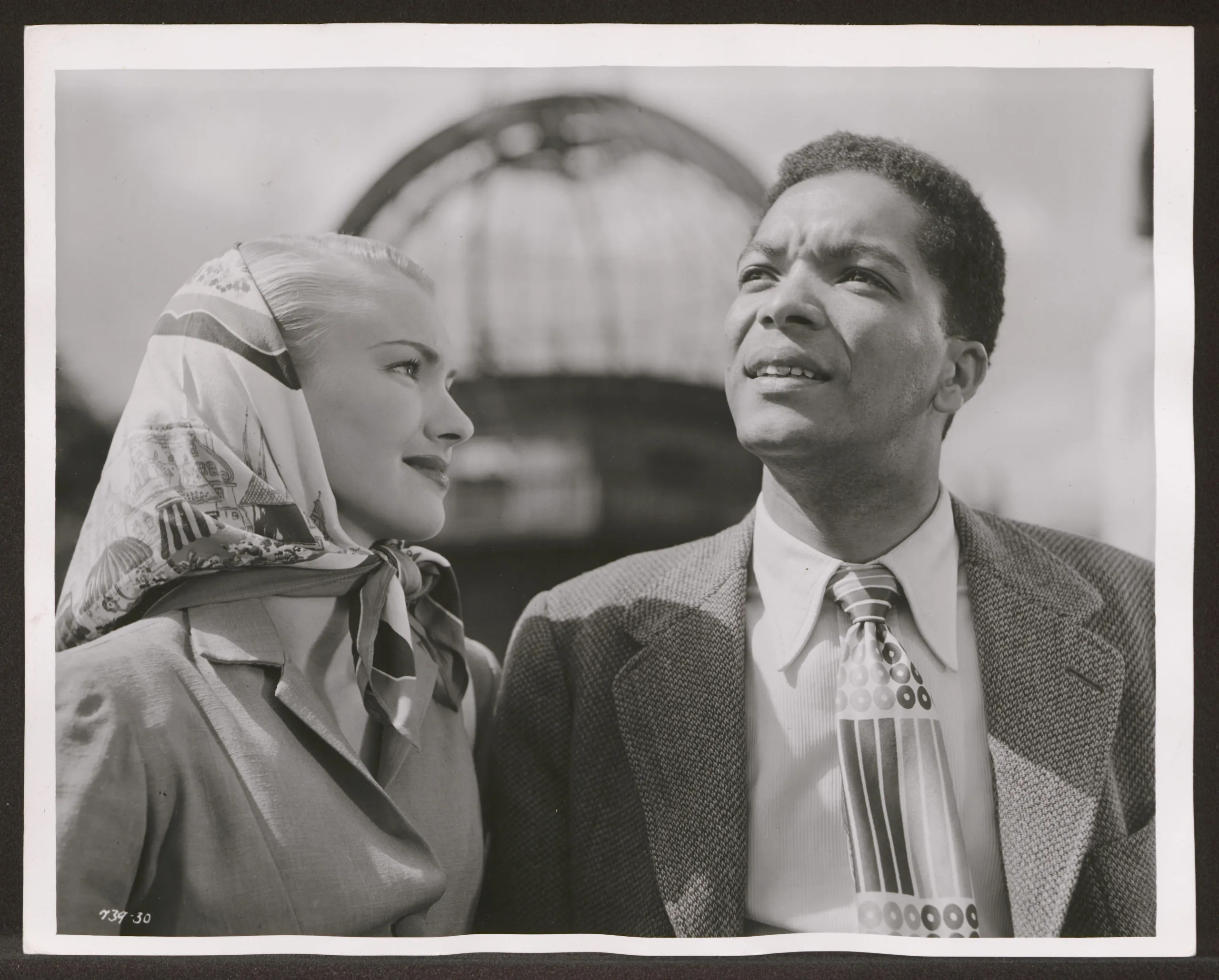
In “Pool of London,” which I recently rewatched at the Locarno Film Festival as part of curator Ehsan Khoshbakht’s comprehensive retrospective program, “British Postwar Cinema 1945 – 1960,” the interracial relationship shared by Johnny and Pat sits at the center of this cinematic continuum. It is neither physically consummated nor long-lasting. It also serves as the side plot to the primary heist flick. The larger story is about Dan, a seaman who smuggles items like women’s stockings past customs to either be given to his girlfriend, Maisie (Moira Lister), or sold on the black market. On this Friday morning, docking in London, however, Dan is approached by acrobat Charlie Vernon (Max Adrian) to smuggle stolen diamonds out of the country. It’s during Dan’s initial visit with Charlie that Johnny meets Pat, who’s taking tickets for Charlie’s show. From that moment on, while Dan traces across the city to set up his score, Johnny and Pat form a relationship that teeters between friendly and romantic.
While in Pat’s company, Johnny is often subjected to prejudice. The first time they meet, for instance, Pat allows Johnny to watch the performance from the back of the theater. When the White usher sees Johnny, he immediately assumes that Johnny is a freeloader. While no racial epithet is exchanged, we can gather from Johnny’s defeated reaction—which also emotionally informs us that it’s not the first time a White man in authority has accused him of malfeasance—that the usher’s ugly reaction is racially motivated. Pat’s reaction is also one of disgust at the usher.
Prejudice isn’t directed solely at Johnny by strangers, either. On Saturday, Pat and Johnny attend a dance with Maisie and Dan. Dan tells Maisie that he gave one of the smuggled stockings meant for her to Johnny, she viciously replies with, “My nylons?! You gave them to that dirty…?” before storming away. A shy Johnny, who’s been working up the courage to give the gift to Pat, is interrupted by an irate Maisie. “You must be hard up to go to him to get them,” a smug Maisie spits at a visibly shaken Pat. When Pat asks for an explanation, Johnny, now embarrassed, drops the subject entirely.
Similar indignities happen in “The Story of a Three-Day Pass” as well. Adapted from Van Peebles’s same-titled novel, the film stars Harry Baird as Turner, a Black American GI stationed in France. Because of a recent promotion to Assistant Orderly, he, like Johnny, has three days leave to head into town. Unlike Johnny, Turner is clearly uncomfortable with his Blackness. Oftentimes, Turner’s reflection verbally accuses him of being an Uncle Tom, thereby clouding his sense of identity. During Turner’s first day of leave, he sees three Black men sitting at a cafe. When he approaches them, he doesn’t find solidarity. They merely exchange pleasantries and nothing more, signaling that Turner struggles to relate to other Black folks.
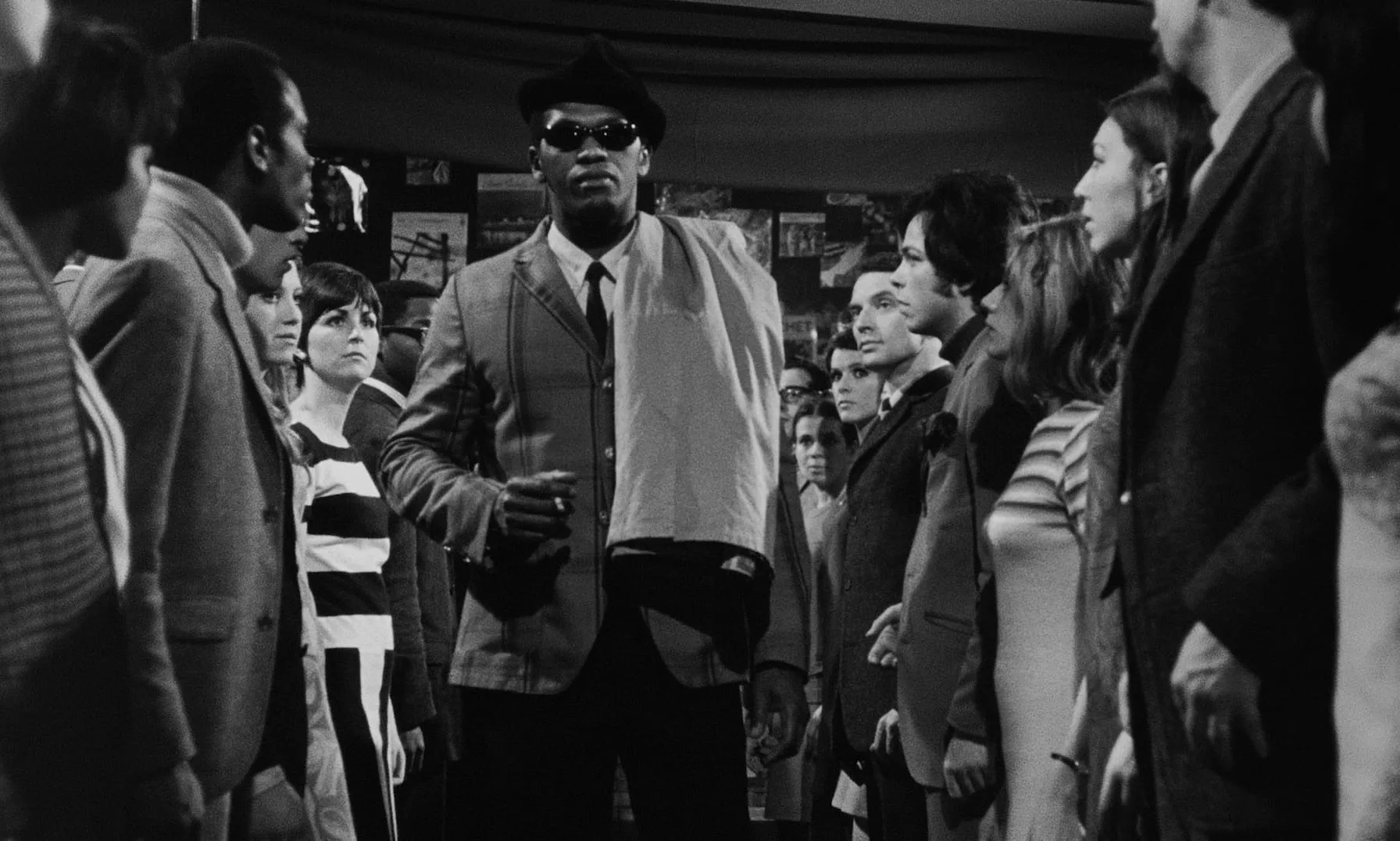
Still, Turner takes his leave and happens upon a bar that illuminates how he’d like to be seen, specifically, by White people. When he walks into the pub, Turner is wearing a plaid suit and a black tie, underneath his black sunglasses and black fedora, and a trench coat draped over his left shoulder. By way of a double dolly, he magically floats through the bar, causing its White patrons to take notice of him. It’s fascinating to compare this double dolly to Spike Lee’s well-documented use of the technique. In Lee’s films, the shot visually expresses the character’s internal feelings: resolve in “Malcolm X” or joy in “Da 5 Bloods”—they rarely involve the external environment. Here, there are both internal and external aspects. After accusing himself of being an Uncle Tom, Turner wants to project the very image of Black cool that the bar patrons might’ve picked up from listening to the kind of imported Jazz that accompanies this scene. The customers’ awed looks offer confirmation of Turner’s hopes. Once he reaches the bar, he sees two White women sitting across the room at a table. The dancing White crowd magically parts for him to approach them. This entire sequence, of course, is in Turner’s imagination. He is summarily dismissed by these women, only to find solace at another table with another White woman, named Miriam (Nicole Berger), who will become his companion throughout his leave.
Although “Pool of London” and “The Story of a Three-Day Pass” have relatively the same set-up—two Black men finding romance with foreign White women while on leave—the latter actually takes a sensual leap forward. Unlike Pat and Johnny, Miriam and Turner do dance. On a later date, the pair head to the countryside for a stay at a seaside inn where they consummate their relationship. Aware of the boundary crossing happening, Van Peebles injects humor into the sex scene by way of Nouvelle Vague techniques. As Miriam is in the bathroom, Turner, through a series of jump cuts, tries on different outfits that might appeal to her: a plunging cowboy shirt, a smoking jacket and pipe, a beatnik beret, and a cigarette holder. Once they start kissing in the middle of the room, each tries to furtively reach for the bed. Once they’re on the bed, a flood of their respective racially based kinks comes alive: Turner imagines himself as an 18th-century nobleman conquering a White lady, while Miriam envisions herself being chased by an African through the bush. They both laugh, realizing the silliness of their fantasies before continuing.
Like Johnny, while dating Miriam, Turner also faces prejudice. During dinner at a Spanish restaurant, the house singer calls Turner the n-word, causing Turner to lunge at him. Turner is beaten by the restaurant’s patrons and then thrown out. Despite trying to explain to Miriam what caused the kerfuffle, Miriam doesn’t believe him—instead, chalking the situation up to Turner losing words in translation. Tellingly, a similar scene happens in “Pool of London” while Pat and Johnny are visiting the National Maritime Museum. Johnny wonders aloud why one man is born White and the other Black, and about God’s skin color. Pat dismisses his contemplations by suggesting that how we’re born doesn’t matter, causing Johnny to recoil with the hope that one day it won’t matter.
Both “Pool of London” and “The Story of a Three-Day Pass” decentralize the topic of racism from America to the rest of the world. During the 1940s, many Black expatriates, such as Richard Wright and James Baldwin, moved to France with the fragile hope that the country offered more freedom than America. Although intellectuals like Wright and Baldwin personally experienced less segregation in France, the country is certainly devoid of racism racism. Baldwin later observed that after the battle of Dien Bien Phu, which loosened France’s grip on colonial Vietnam, and the Algerian War, France became more hostile to people of color.
After being rebuffed by a bigoted Hollywood, Van Peebles himself arrived in Paris in 1961 to pursue a career as a journalist and writer. He eventually learned the language and wrote the novel “The Story of a Three-Day Pass.” Once published, he wasted little time taking advantage of a French law dictating that French writers could receive a director’s card to make films, allowing Van Peebles to set about adapting his book into his same-titled debut feature film.
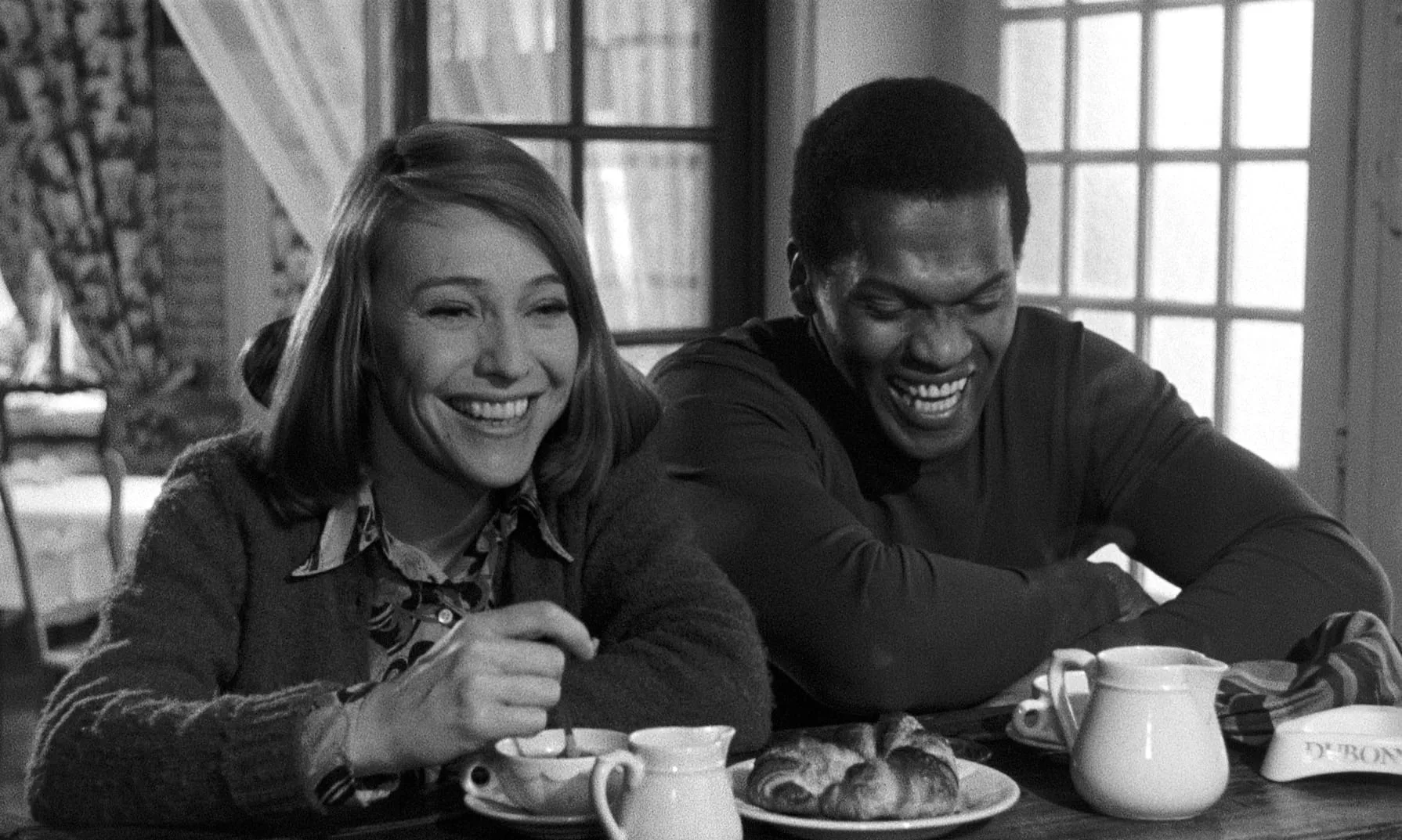
By 1948, following the passage of the Nationality Act, which granted British citizenship to everyone in the British Empire, migrants from the Caribbean arrived in the UK in search of employment. The first arrivals faced housing discrimination, exclusion from certain positions and places of employment, and racial slurs. The rightwing White Defense League, for example, adopted the slogan “Keep Britain White.” It’s also worth noting that in John Boulting’s labor comedy “I’m All Right Jack” (1959), which also played as part of the retrospective, it often features union boss Fred Kite (Peter Sellers) announcing his fear that Blacks will come and take their jobs.
Johnny, who hails from Jamaica, the same country the ship the Empire Windrush set sail from, thereby beginning the transatlantic migration that became known as the Windrush generation, has seen enough in his short time in England to return home.
The physical locations of “Pool of London” and “The Story of a Three-Day Pass” are inseparable from their respective films. Their watery surroundings, for instance, naturally suggest travel and migration. In “Pool of London”, much of the action happens on the Thames, where the trade of goods blurs the line between borders and nationalities. Coincidentally, in “The Story of a Three-Day Pass,” the beach Miriam and Turner visit looks out to the English Channel. The fluidity of the water contrasts with the restrictiveness of the social systems that the Black protagonists of these films must navigate. As does the sense of desolation and loneliness. In “Pool of London,” painful solitude is manifested in cinematographer Gordon Dines’s photography of London’s bombed-out landscape (many of the films in Locarno’s Post-War Britain retrospective also take notice of the damage left behind by the Blitz). Moreover, in “The Story of a Three-Day Pass,” the empty beach Miriam and Jonny visit demonstrates the segregation the couple feels from the world.
In “Pool of London,” Black invisibility also alters how Johnny’s White friend, Dan, perceives him. When Dan realizes he can’t smuggle the stolen diamonds on the ship, he gives them to Johnny to take aboard under the belief he won’t be stopped. Dan even went so far as to tell Johnny several times that it’ll be a cakewalk. When considering Vernon’s vaudevillian background, the reference to “cakewalk,” a common dance practice among Black people in minstrel shows and silent films, Johnny is seemingly connected to the last half-century of Black performers. As Dan gets into greater and greater trouble, eventually being hunted by the police in connection with a murder, he begins to realize this isn’t actually a cakewalk. Dan goes looking for Johnny to save him from taking the wrap for the lifted goods. Tellingly, when Dan goes into a pub that he and Johnny frequent, the barmaid doesn’t remember Johnny. Similar to Ralph Ellison’s “Invisible Man,” White people never see Johnny’s existence.
Turner in Van Peebles’s film isn’t as invisible. While he is at the beach, for instance, three of his White comrades arrive. The trio of soldiers sits opposite their Black superior as the visage of Miriam, running up the beach, bisects the frame. When Miriam appears, lovingly falling atop Turner, the once genial soldiers are shaken. “We’ll let you get back to your thing,” one serviceman says. “But we’ll tell everybody we saw you.” “Thing” becomes a loaded word in this dialogue. Is Miriam now dehumanized by being with Johnny? Is an interracial couple so foreign to these White men that the union flies past definition? Van Peebles leaves the questions hanging. The second half of the statement— “we’ll tell everybody”—is even more cutting. Despite Miriam’s soothing, Turner knows he’s now lost his promotion.
Although “Pool of London” shares a similar subject matter with “The Story of a Three-Day Pass,” their approaches to externalizing the psychological angst wrought by racism differ slightly. Dearden, the director of “Pool of London,” was a White British man who worked his way up through Ealing Studios, making quota quickies. After “Pool of London,” Dearden continued to make pictures that tested racial dynamics with “All Night Long” (1961) and “Sapphire” (1962). With “Pool of London,” Dearden possibly knew he could never understand the anguish Johnny feels. He can’t psychologically understand what racial rejection means. Thankfully, Bermudian actor Earl Cameron’s revealing performance adds depth to Johnny. Whenever a slight is directed at Johnny, Cameron’s face turns downcast and his posture sags. Dines’s observant photography takes great notice of Cameron’s shoulders under his blazer, the way they rise and fall, swing with elation, or become stiff with anger.
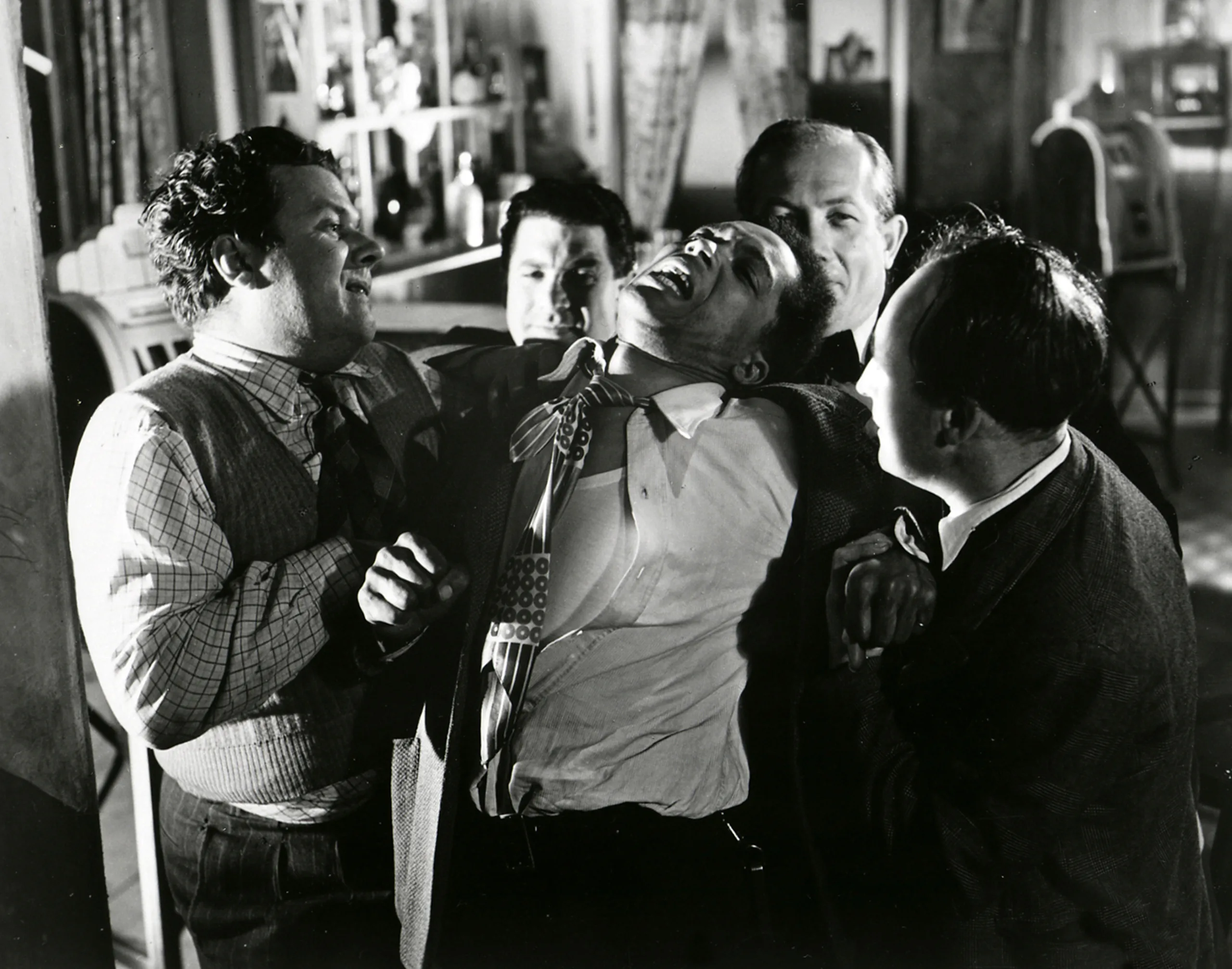
Conversely, as a Black man, Van Peebles implicitly understands Turner’s insecurities. He projects Turner’s self-doubt through self-reflective mirror scenes. Turner’s reflection persistently tells him not to trust Miriam and questions his Blackness. With each external and internal dig, Johnny’s personhood is erased not solely through the violence acted upon the Black body but the emotional violence inflicted upon one’s self-worth. By showing that struggle, Van Peebles pushes the film away from being a White narrative; that is, depictions of bigotry speaking directly to White guilt. “making it a character study of Blackness in totalitarian systems. “The Story of a Three-Day Pass” is a character study about Black loneliness told from a Black perspective.
And though both films, on their face, have different endings, the sentiment remains the same. When Turner returns to base in “The Story of a Three-Day Pass,” his promotion is rescinded, and he’s confined to the barracks. His only reprieve comes 13 days later when Black women of the First AME Church of Harlem: Royal Crusading Angels argue for his freedom after he’s given them a tour of the base. With salvation, Turner resigns himself to believing that an interracial relationship is futile. In “Pool of London,” Johnny is disappointed when he sees Pat, who has seemingly invited him on another date, instead hanging out with her White friends. Was she really in love with him, or did she see their fleeting union as platonic? When Johnny returns to the Dunbar, with the stolen diamonds in tow, he doesn’t know the police are there waiting to search him. Dan, in a reverse of “The Defiant Ones,” sacrifices his own freedom so that Johnny might board the ship and return home to Jamaica.
In both instances—Turner’s release from his confinement and Johnny’s trip home—there is an embrace of racial normativity. These foreign shores do not offer refuge away from prejudice. Nor are their inhabitants able to have frank conversations about fraught racial tensions or systemic bias. Tellingly, in “Pool of London,” the Dunbar’s Engine Room Officer (James Robertson Justice) never goes to shore when they dock in the harbor. Later in the film, he explains that, from the ship, London looks like a glittering, clean city. But when one looks closer, everything is dirty underneath it. In “Pool of London” and “The Story of a Three-Day Pass,” the dirt on the other side of the pond is plainly visible.

